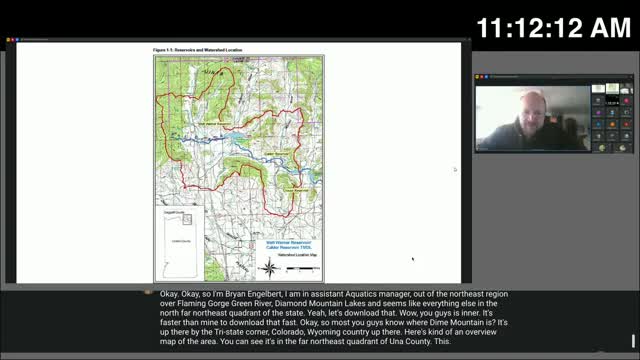Matt Warner highlights TMDL impact of phosphorus on Utah's aquatic ecosystem
March 22, 2025 | Natural Resources Department, Utah Environment, State Agencies, Organizations, Utah Executive Branch, Utah
This article was created by AI summarizing key points discussed. AI makes mistakes, so for full details and context, please refer to the video of the full meeting. Please report any errors so we can fix them. Report an error »

The Blue Ribbon/Habitat Council Joint Meeting held on March 20, 2025, by the Utah Department of Natural Resources focused on critical environmental issues, particularly concerning water quality and fish management in the state. The meeting addressed the implications of Total Maximum Daily Load (TMDL) designations, specifically related to phosphorus pollution in various water bodies.
The session began with a presentation on the TMDL map, which indicates areas with excessive pollutants, notably phosphorus. This non-point source pollution poses challenges for both agricultural practices and fisheries management. A speaker highlighted the dual nature of phosphorus, noting its benefits for crop growth and fish populations, but also warned that excessive levels can lead to detrimental effects on aquatic ecosystems.
As the discussion progressed, the council reviewed data showing the growth rates of fish in nutrient-rich waters, with some fish achieving impressive growth of 5 to 6 inches per year. However, the conversation shifted to the consequences of high phosphorus levels, illustrated by a case of winter fish kills. The speaker explained that during winter, oxygen levels in water can drop significantly due to ice cover and decaying plant matter, leading to mortality among fish and other aquatic life.
The meeting concluded with a call for continued monitoring and management strategies to address phosphorus levels in Utah's water bodies. The council emphasized the importance of balancing nutrient levels to support both agricultural productivity and healthy fish populations, ensuring sustainable management of natural resources in the state.
The session began with a presentation on the TMDL map, which indicates areas with excessive pollutants, notably phosphorus. This non-point source pollution poses challenges for both agricultural practices and fisheries management. A speaker highlighted the dual nature of phosphorus, noting its benefits for crop growth and fish populations, but also warned that excessive levels can lead to detrimental effects on aquatic ecosystems.
As the discussion progressed, the council reviewed data showing the growth rates of fish in nutrient-rich waters, with some fish achieving impressive growth of 5 to 6 inches per year. However, the conversation shifted to the consequences of high phosphorus levels, illustrated by a case of winter fish kills. The speaker explained that during winter, oxygen levels in water can drop significantly due to ice cover and decaying plant matter, leading to mortality among fish and other aquatic life.
The meeting concluded with a call for continued monitoring and management strategies to address phosphorus levels in Utah's water bodies. The council emphasized the importance of balancing nutrient levels to support both agricultural productivity and healthy fish populations, ensuring sustainable management of natural resources in the state.
View full meeting
This article is based on a recent meeting—watch the full video and explore the complete transcript for deeper insights into the discussion.
View full meeting

